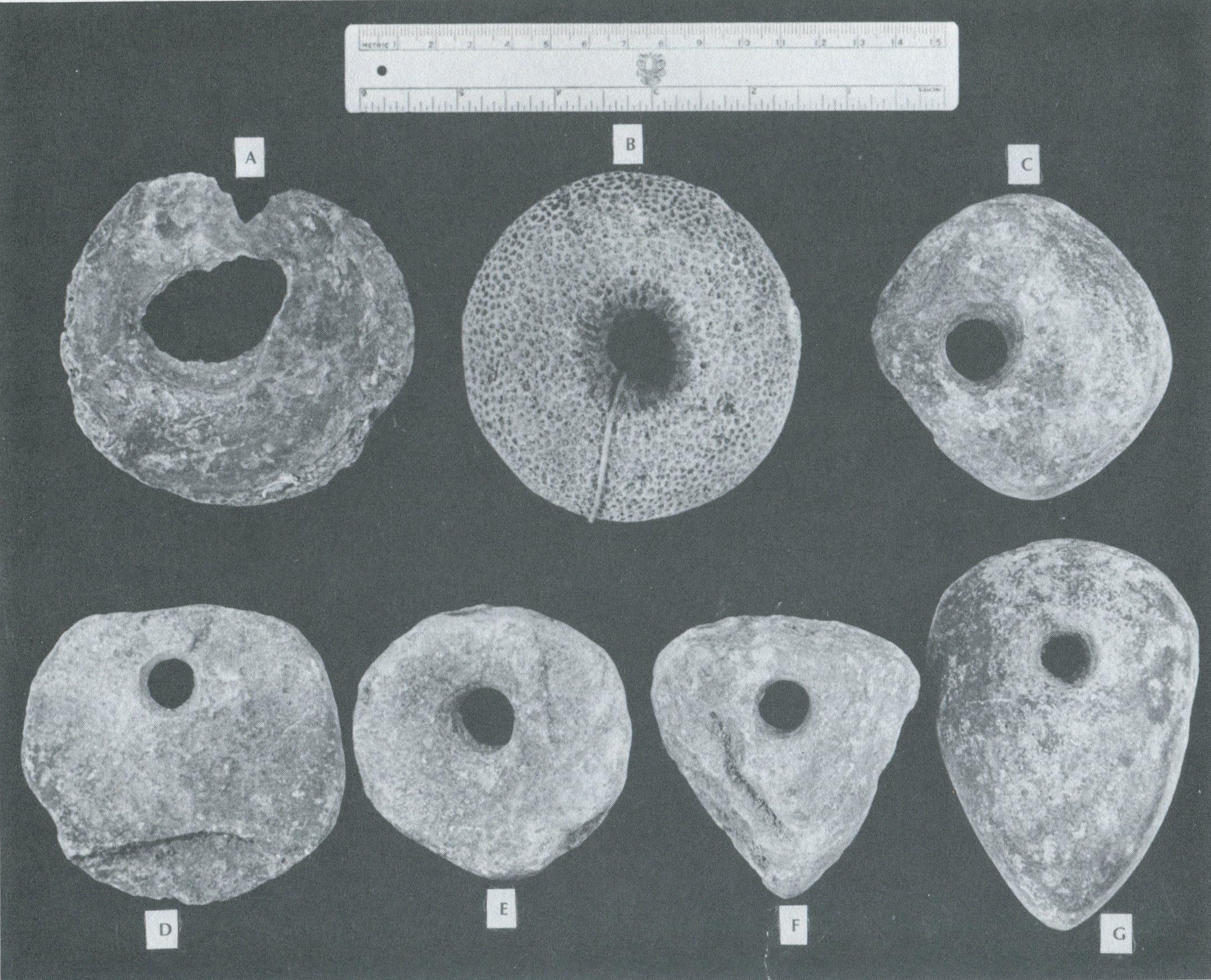Throughout the periods of pre-historic time, traveling for the Native American populations meant hiking or canoeing, or a combination of both. A great deal of evidence for early trade and travel has surfaced. Many of the later canoes have been recovered, but one item of necessity has escaped our grasp; the canoe anchor.

Very few anchor stones have been reported. Some large maul stones have been mistaken for anchors. This 15 pound specimen recovered by Ashley Clark is the first example noted in Georgia. It was roughly pecked from granite and has a clearly defined “neck” where rope could be attached with a knob to prevent slipping.
Perhaps these anchor stones are not often found because natural stones could be used with little or no altering, but the more likely reason is that the courses of our rivers have changed over time and these unusual artifacts are now buried beneath the soils along the river’s edge where Ashley found this example.

The Calusa people and related tribes had developed a system of canals that circumvented southern Florida including Fisheating Creek and Lake Okechobee. The canal system was the heart of their commerce much like the Chattahoochee, Flint, and Ocmulgee rivers were in Georgia. It is clear to see that there is more than one way to make a canoe anchor. These rounded slabs of limestone (the top center example appears to be coral) were perforated in the center. Olithic limestone is essentially the only stone substance that exists in south Florida. In some examples, it is clear that the rope had worn away the edges of the central perforation. It is equally clear that none of these stones is a naturally occurring phenomenon. Each of the stones measures between 8 and 10 inches in diameter and the central perforation is uniform